Photos: Our Changing Moon
The Moon As We Know It
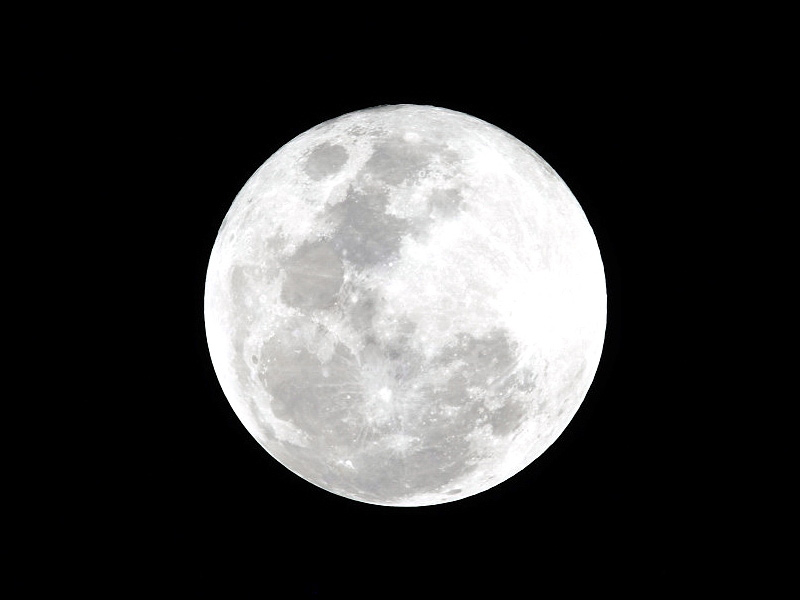
As our closest cosmic neighbor, and the Earth's only natural satellite, the moon has long been a symbol of mystery and intrigue. Spacecraft have been studying the moon for nearly 50 years, and lunar exploration has been an important benchmark in our nation's history. But, there is still much to learn, and many more questions to answer. Currently, NASA's only active mission at the moon is the Lunar Reconnaissance Orbiter, which launched in June 2009. Here is a look at the moon as we know it.
Natural Bridge on the Moon
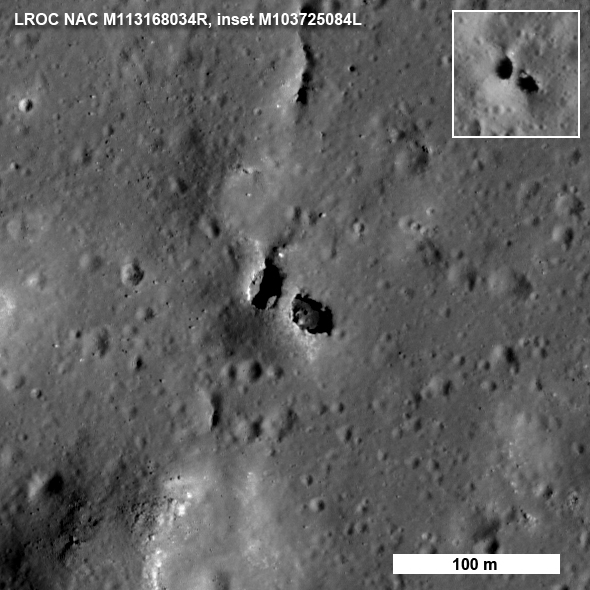
In Aug. 2010, the Lunar Reconnaissance Orbiter Camera (LROC) revealed a natural bridge found in the moon's King crater. The bridge is about 23 feet (7 meters) wide on top and approximately 30 feet (9 meters) on the bottom side. It would be a 66-foot (20-meter) walk to cross from one side to the other. This finding demonstrated that even after decades of lunar science and exploration, there is still a lot to learn about our extraordinary moon.
The Moon in Science Fiction
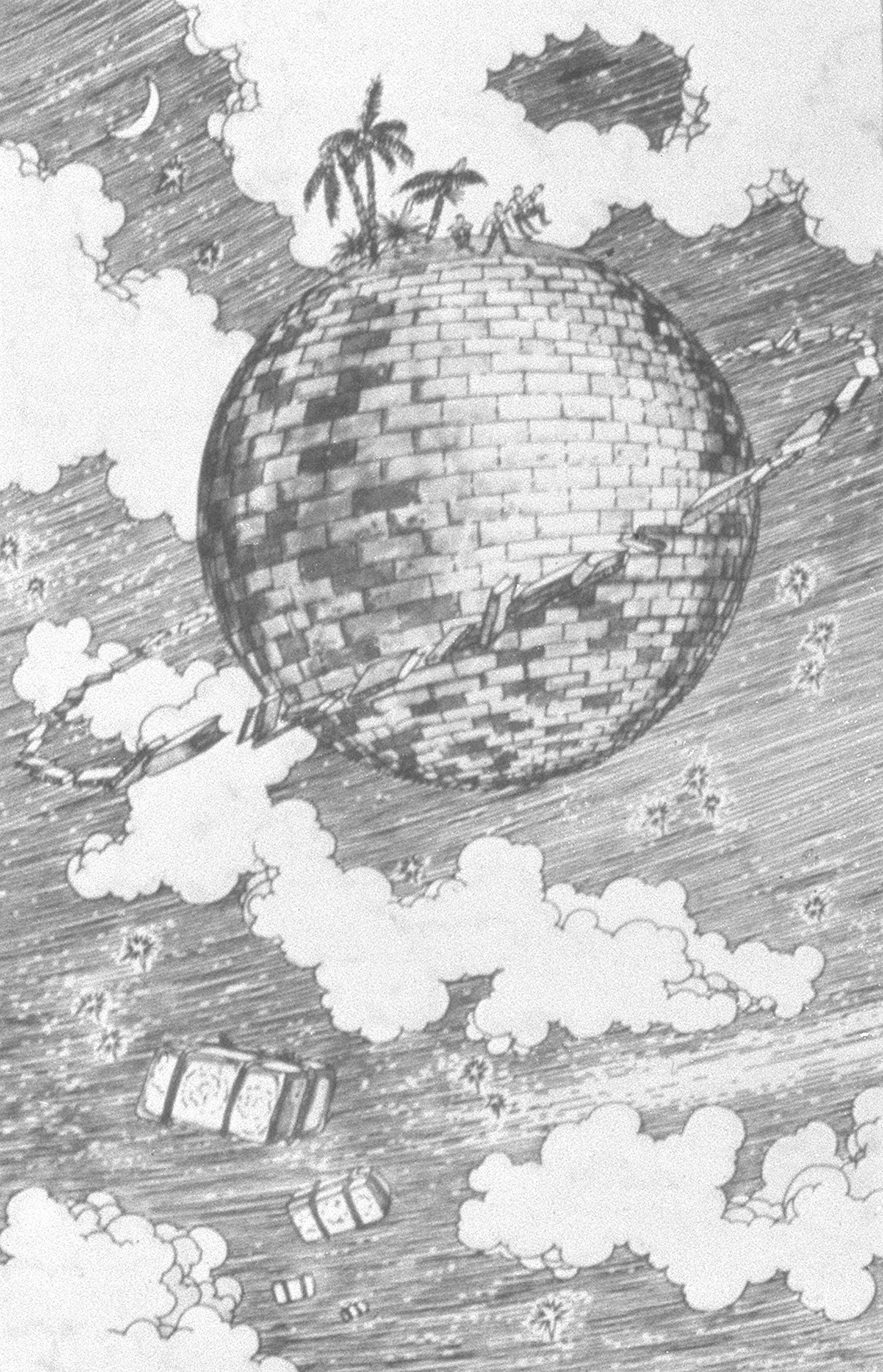
Science fiction writers, like Jules Verne in France and Edward Everett Hale in America, understood that one of the most vital elements for space travel is a fertile imagination. The first known proposal for a manned-satellite appears in a story by Hale entitled "The Brick Moon," published in 1899. The story involved a group of young Bostonians who planned to put an artificial satellite into polar orbit for sailors to use to determine longitude accurately and easily. They planned to send a brick satellite into orbit because the satellite would have to withstand fire very well.
Crash Landing on the Moon
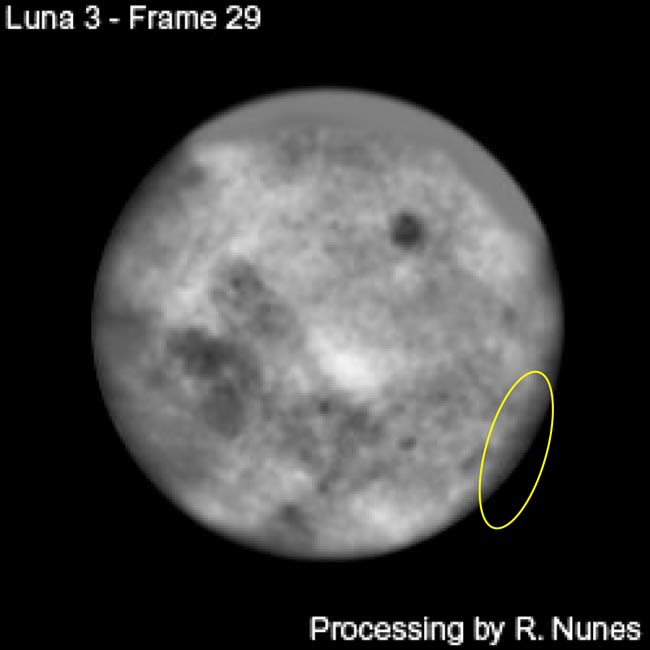
In 1959, the Soviet Luna spacecraft flew by the moon and concluded its mission by impacting the lunar surface. This image is a re-processed Luna 3 frame 29 taken on Oct. 7, 1959. The dark smudge of the South Pole-Aitken basin's western edge is circled. The familiar Earth-facing maria are can be seen in the western half of the disc.
Mapping the Surface
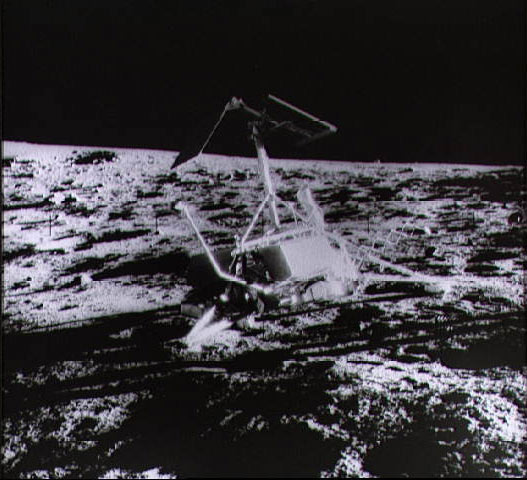
NASA's unmanned Surveyor spacecraft photographically mapped the moon's surface in the mid-1960s to determine whether the lunar terrain was hospitable enough to land humans. This photograph of Surveyor 3 was taken during the Apollo 12 mission in 1969, during an extravehicular activity on the surface of the moon. The Apollo 12 Lunar Module landed within 600 feet (183 meters) of Surveyor 3, in the Ocean of Storms. The television camera and several other pieces were removed from Surveyor 3 and brought back to Earth for scientific examination.
One Small Step for Man …
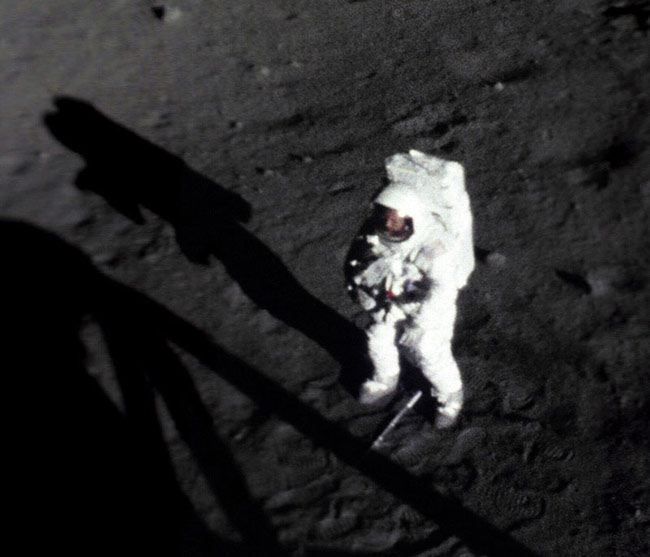
On July 20, 1969, Apollo 11 astronaut Neil Armstrong became the first man to walk on the moon. Armstrong is pictured here, shortly after collecting a sample of lunar dust and rocks. At his feet is the handle for the sample collection tool.
One Giant Leap for Mankind
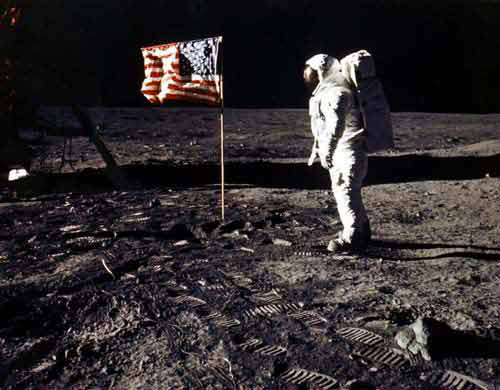
In one of the many iconic photos from the Apollo 11 mission of July 1969, Buzz Aldrin, the second man to step foot on the moon, is pictured standing by the American flag. In all, six of NASA's Apollo missions landed astronauts on the moon between 1969 and 1972.
Get the Space.com Newsletter
Breaking space news, the latest updates on rocket launches, skywatching events and more!
What's Our Place?
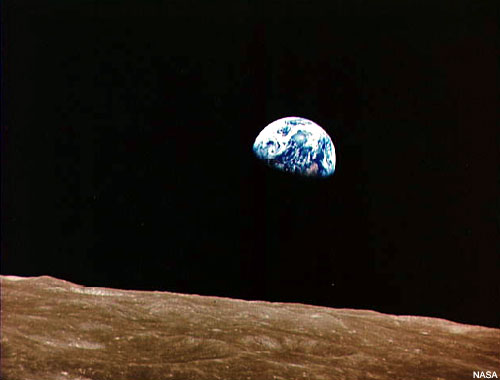
One of the most famous pictures to come out of the Apollo program is this view of Earth rising over the lunar surface, as seen by the crew of Apollo 8 during Christmas of 1968. The pivotal image redefined how we felt about ourselves in relation to the cosmos.
Oh My Darling, Clementine
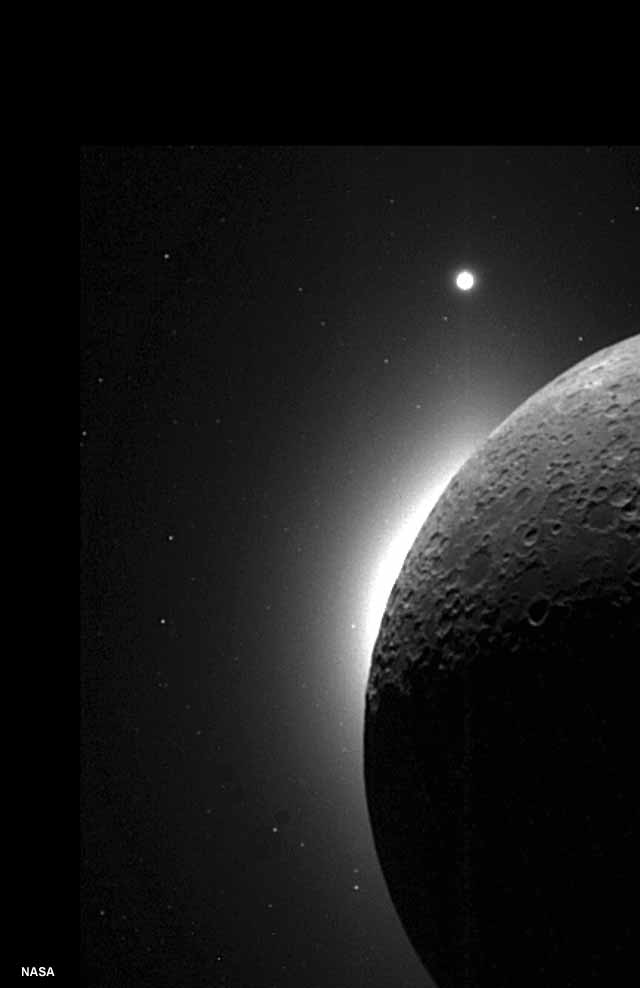
In this 1994 picture from the Clementine spacecraft, the moon is illuminated solely by light from the sun that is being reflected from the Earth. This "earthshine" occurs near the new moon. The sun is just behind the moon, creating the eerie glow. The Clementine spacecraft, which launched Jan. 25, 1994, was a joint experiment between NASA and the Ballistic Missile Defense Organization. One of the mission's objectives was to observe the moon. The spacecraft made worldwide headlines that year when it discovered possible indirect evidence for water ice on the moon, in a permanently shadowed miles-deep crater at the lunar south pole.
Water Ice on the Moon?
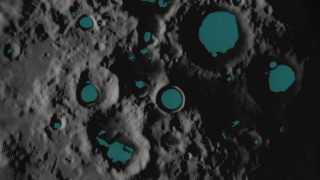
This NASA illustration depicts how water ice may lie hidden at the bottom of deep south pole craters that are in permanent shadow on the moon. The idea of ice in the floors of the moon's sunlight-shy polar craters was first publicized in 1961 by Caltech researchers. The prospect of water ice on the moon has fueled excitement for future lunar exploration, including the possibility of establishing base camps on the moon.
Mapping the Lunar Topography

Tidal forces between the moon and the Earth have slowed the moon's rotation so that one side of the moon always faces toward our planet. Though several spacecraft have imaged the far side of the moon before, NASA's Lunar Reconnaissance Orbiter is providing new details region. This image, taken by instruments onboard LRO, highlights the moon's topography, with the highest elevations up above 20,000 feet in red and the lowest areas down below 20,000 feet in blue.
Join our Space Forums to keep talking space on the latest missions, night sky and more! And if you have a news tip, correction or comment, let us know at: community@space.com.

Denise Chow is a former Space.com staff writer who then worked as assistant managing editor at Live Science before moving to NBC News as a science reporter, where she focuses on general science and climate change. She spent two years with Space.com, writing about rocket launches and covering NASA's final three space shuttle missions, before joining the Live Science team in 2013. A Canadian transplant, Denise has a bachelor's degree from the University of Toronto, and a master's degree in journalism from New York University. At NBC News, Denise covers general science and climate change.









